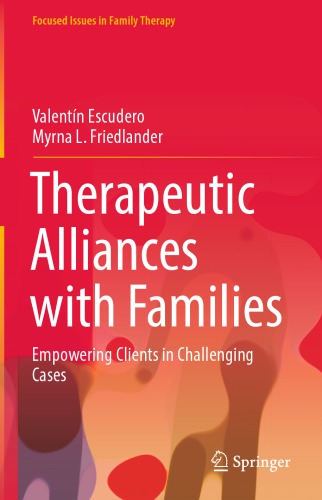دانلود کتاب Therapeutic alliances with families : empowering clients in challenging cases - Original PDF
Author:
Escudero, Valentín; Friedlander, Myrna L
0 (0)
توضیحات کتاب :
This practical breakthrough introduces a robust framework for family and couples therapy specifically designed for working with difficult, entrenched, and court-mandated situations. Using an original model (the System for Observing Family Therapy Alliances, or SOFTA) suitable to therapists across theoretical lines, the authors detail special challenges, empirically-supported strategies, and alliance-building Read more... Abstract: This practical breakthrough introduces a robust framework for family and couples therapy specifically designed for working with difficult, entrenched, and court-mandated situations. Using an original model (the System for Observing Family Therapy Alliances, or SOFTA) suitable to therapists across theoretical lines, the authors detail special challenges, empirically-supported strategies, and alliance-building interventions organized around common types of ongoing couple and family conflicts. Copious case examples illustrate how therapists can empower family members to discover their agency, find resources to address tough challenges, and especially repair their damaged relationships. These guidelines also show how to work effectively within multiple relationships in a family without compromising therapist focus, client individuality, or client safety
سرچ در وردکت | سرچ در گودریدز | سرچ در اب بوکز | سرچ در آمازون | سرچ در گوگل بوک
1,149 بازدید 0 خرید










